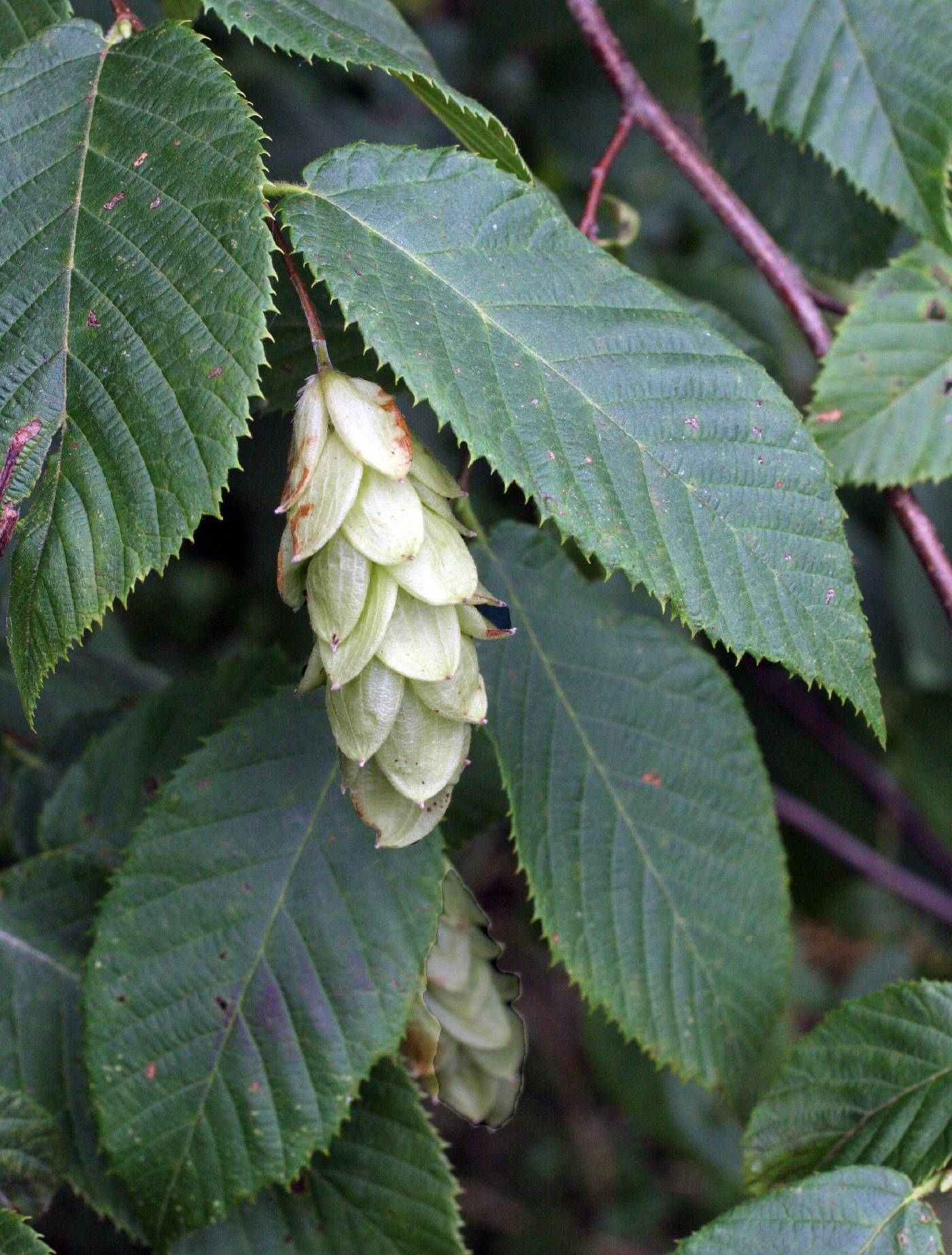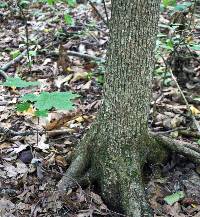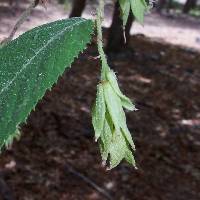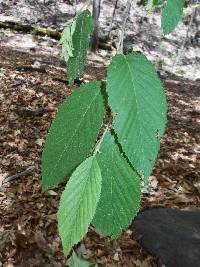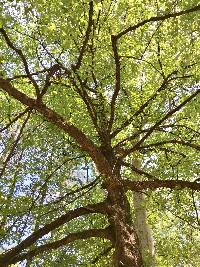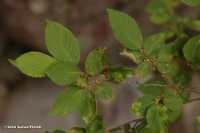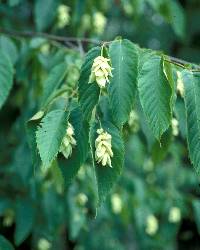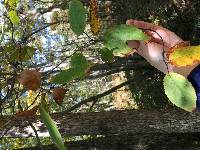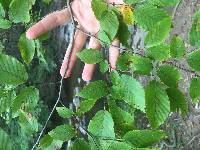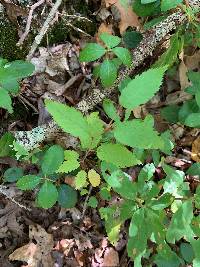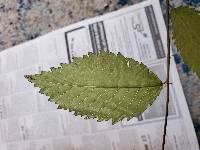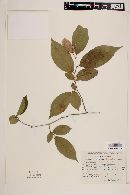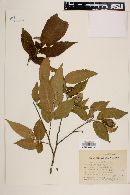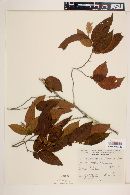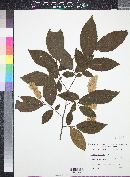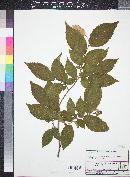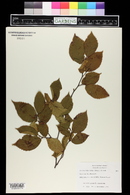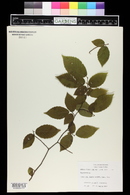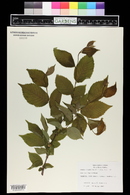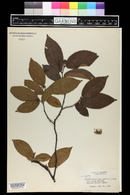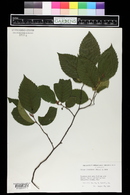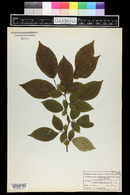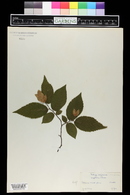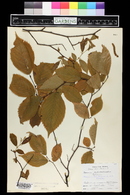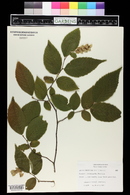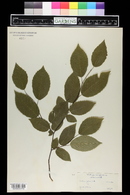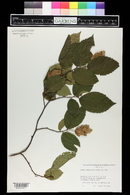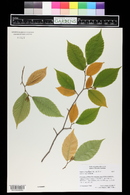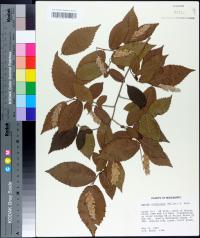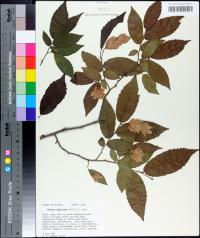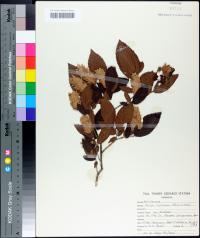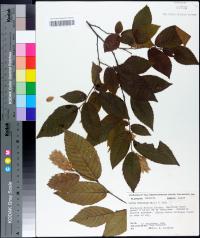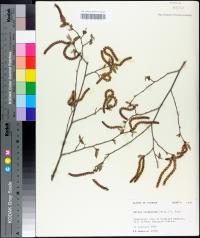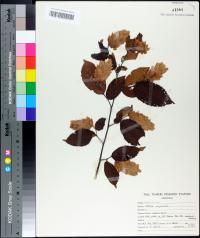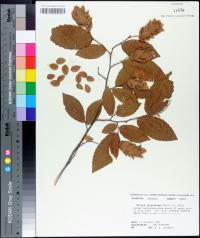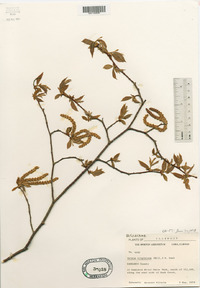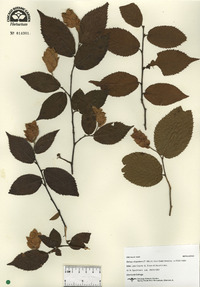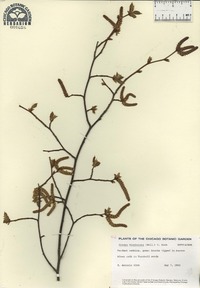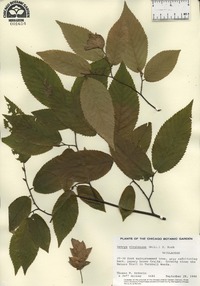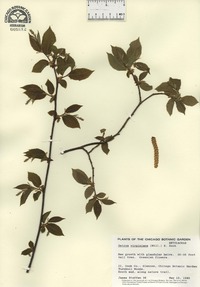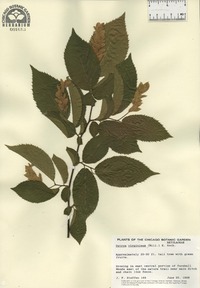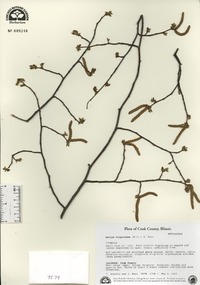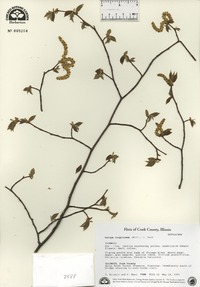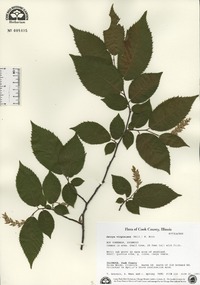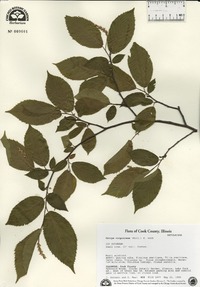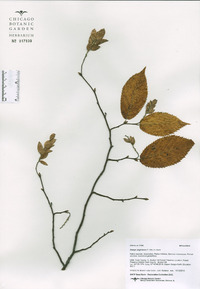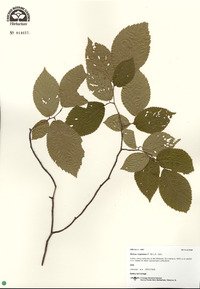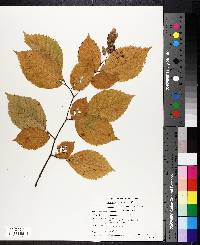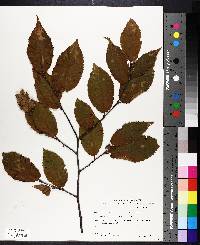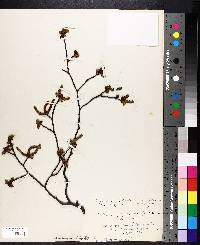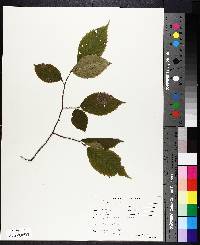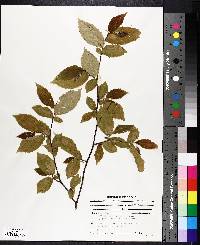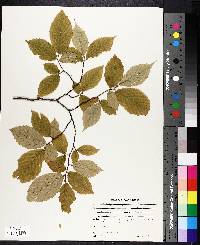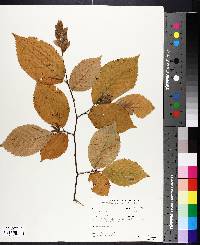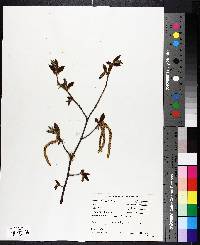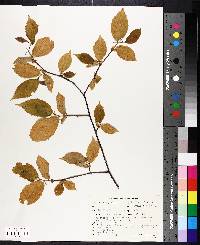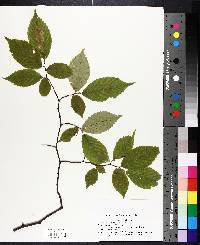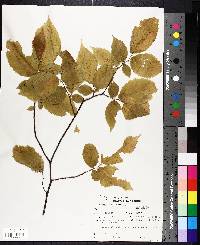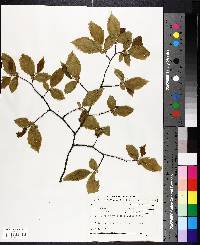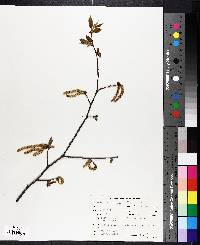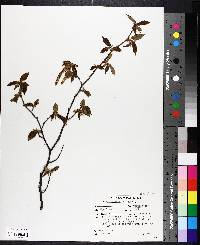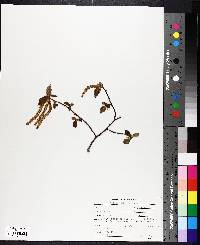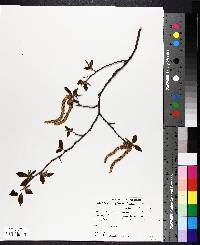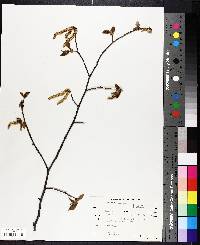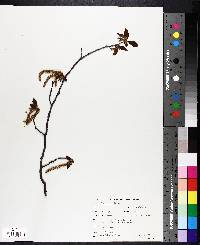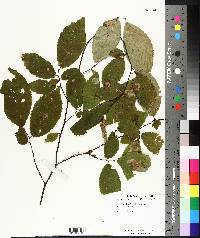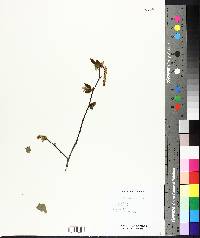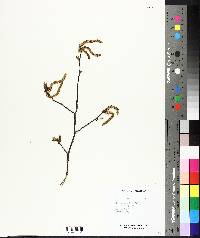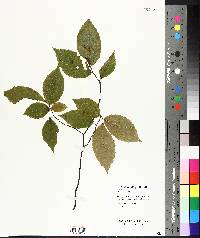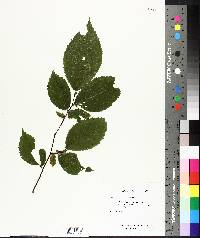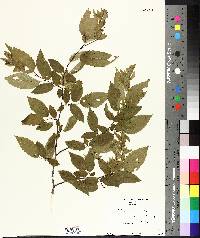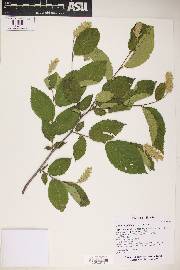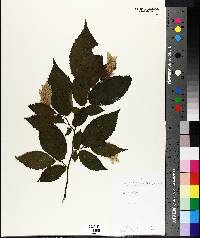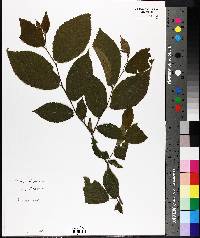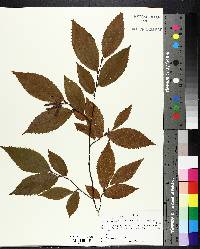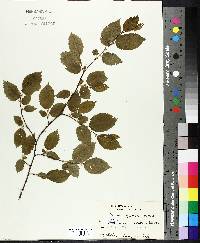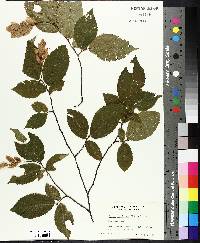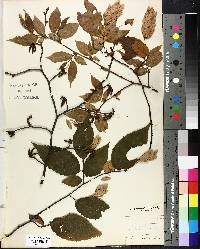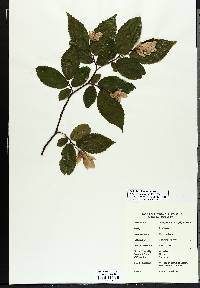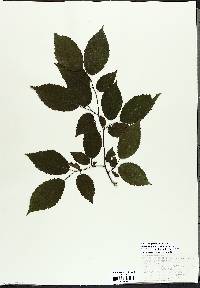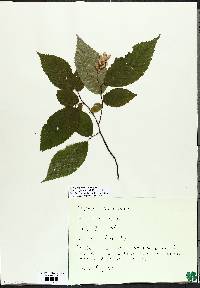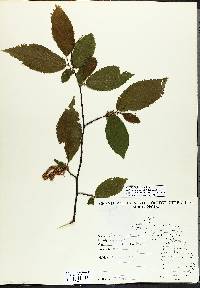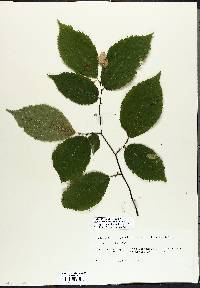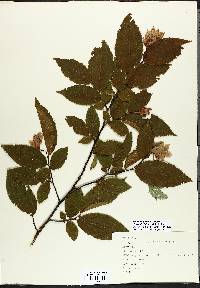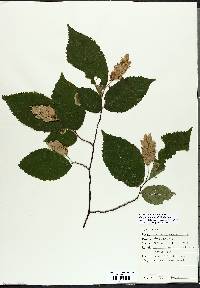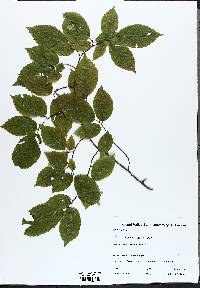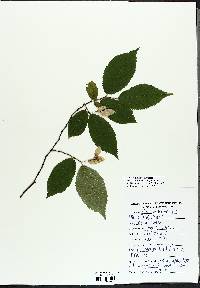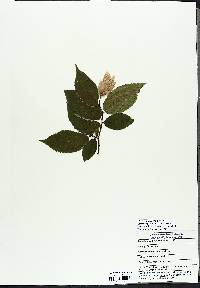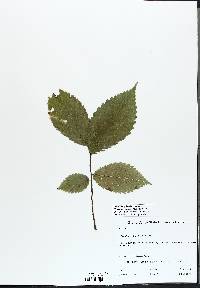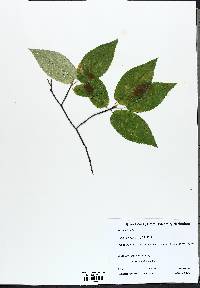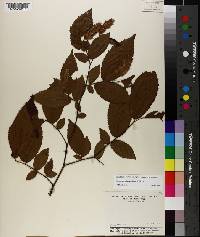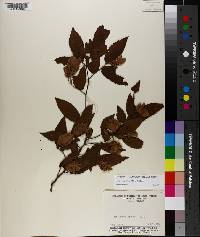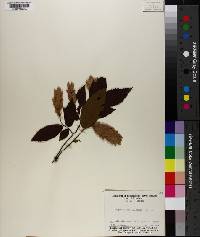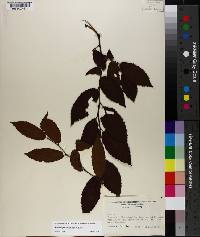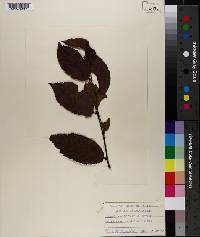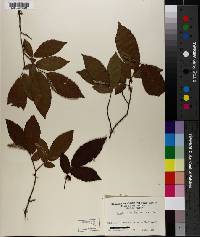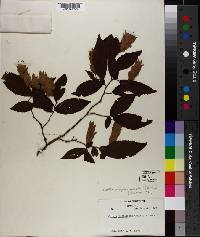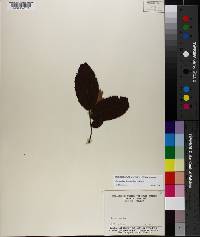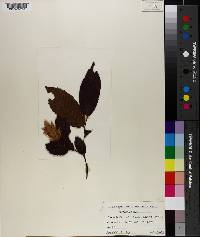
|
|
|
|
Family: Betulaceae
Eastern hop hornbeam, more...Eastern Hop-Hornbeam, Ironwood, hophornbeam
[Ostrya virginiana var. glandulosa] |
Trees , to 18 m; trunks short, crowns open, narrow to broadly rounded. Bark grayish brown or steel gray, shredding into narrow, sometimes rather ragged, vertical strips. Twigs sparsely pubescent to densely velutinous. Leaves: petiole glabrous to pubescent, without stipitate glands. Leaf blade narrowly ovate or elliptic to oblong-lanceolate, (5--)8--10(--13) × 4--5(--6) cm, base narrowly rounded to cordate or cuneate, margins sharply and unevenly doubly serrate, apex usually abruptly acuminate, sometimes acute or gradually tapering; surfaces abaxially sparsely to moderately pubescent (or sometimes densely villous), especially on major veins. Inflorescences: staminate catkins 2--5 cm; pistillate catkins 0.8--1.5 cm. Flowering with leaves in late spring. Infructescences 3.5--6.5 × 2--2.5 cm; bracts 1--1.8 × 0.8--1 cm. 2 n = 16. Flowering late spring. Moist, open to forested hillsides to dry upland slopes and ridges, sometimes also on moist, well-drained flood plains; 0--300 m; Man., N.B., N.S., Ont., P.E.I., Que.; Ala., Ark., Conn., D.C., Fla., Ga., Ill., Ind., Iowa, Kans., Ky., La., Maine, Md., Mass., Mich., Minn., Miss., Mo., Nebr., N.H., N.J., N.Y., N.C., N.Dak., Ohio, Okla., Pa., R.I., S.C., S.Dak., Tenn., Tex., Vt., Va., W.Va., Wis., Wyo. The shaggy bark and winter-exposed terminal staminate catkins of Ostrya virginiana permit easy recognition of this characteristic tree of dryish eastern forests. Along the Atlantic Coastal Plain, Ostrya virginiana , like Carpinus caroliniana , has smaller, blunter, often more pubescent leaves ( O . virginiana var. lasia Fernald). This variety has not been studied carefully; from the available material, however, it does not seem as distinct as the coastal subspecies in C . caroliniana . Native Americans used Ostrya virginiana medicinally to treat toothache, to bathe sore muscles, for hemorrhages from lungs, for coughs, kidney trouble, female weakness, cancer of the rectum, consumption, and flux (D. E. Moerman 1986).
Tree 10 - 18 m tall, trunk 15 - 30 cm in diameter Leaves: alternate, short-stalked, dull yellowish green above, paler beneath, 7 - 12 cm long, 3 - 5 cm wide, oblong to narrow egg-shaped with a rounded to heart- or wedge-shaped base and a pointed tip, toothed, some veins branching. Fall color is dull yellow. Flowers: either male or female, found on the same tree (monoecious), borne in catkins. Male catkins are 2 - 5 cm long, hanging in groups of three, and exposed through winter. Female catkins typically found in upright pairs, 0.8 - 1.5 cm long, each flower surrounded by an inflated hairy bract. Fruit: a nut enclosed in an inflated, oval, hairy bract, borne in clusters 3 - 6 cm long, each cluster with four to ten flattened and tiny nuts. Bark: chestnut brown and smooth with horizontal corky lines (lenticels) when very young, becoming grayish brown, thin, divided into narrow, longitudinal strips with loose ends, appearing shredded. Twigs: slender, light brown changing to shiny reddish brown and then dull dark brown. Terminal buds: absent. Leaf scars: crescent-shaped with three bundle scars. Form: rounded to conical with many slender branches. End and lateral buds: angled away from the stem, yellowish green changing to light brown, 3 - 6 mm long, egg-shaped with a short-pointed tip, with longitudinally ridged and slightly hairy scales. Similar species: Carpinus caroliniana and Ostrya virginiana are similar when young because they both have smooth bark. The bark of C. caroliniana remains smooth with muscle-like ridges when old, the leaves have non-branching straight veins, and the clusters of nuts are surrounded by three-lobed bracts. Flowering: early April to mid May Habitat and ecology: Understory tree most common in upland woods. Well-drained soils are needed. Occurence in the Chicago region: native Notes: The very strong wood of this species was once used for sleigh runners, prying poles, levers, wagon tongues, fuel, fence posts, and wheel spokes and rims. The fruit clusters resemble hops. Etymology: Ostrya comes from the Greek name for a different hardwood tree, ostrua, possibly the European hornbeam (Carpinus betulus). Virginiana means "from Virginia." Author: The Morton Arboretum Tree to 20 m; twigs and petioles at first pilose and sometimes glandular, later glabrescent; lvs narrowly to broadly oblong or ovate, short-acuminate, sharply and often doubly serrate; fruiting catkins short-cylindric, 3-5 cm, each inflated sac flattened-ovoid 1-3 cm, bristly at base; nutlet 5 mm; 2n=16. Moist or dry woods and banks; N.S. to Man., s. to Fla. and Tex. Gleason, Henry A. & Cronquist, Arthur J. 1991. Manual of vascular plants of northeastern United States and adjacent Canada. lxxv + 910 pp. ©The New York Botanical Garden. All rights reserved. Used by permission. From Flora of Indiana (1940) by Charles C. Deam In Indiana this tree is generally called ironwood. The species or its form [f. glandulosa] is frequent to common in most parts of the state, although it is extremely rare in the Lower Wabash Valley. It prefers a dry soil, is of slow growth, and since it has no commercial value in Indiana, it is regarded by foresters as a weed tree. Forma glandulosa (Spach.) Macbr. Has the branchlets, petioles, peduncles, and often the midrib and veins of the lower surfaces of the leaves covered more or less with short, erect, reddish glandular hairs. The form is found with the species but is not frequent and is more northern in its distribution. …… Indiana Coefficient of Conservatism: C = 5 Wetland Indicator Status: FACU Deam (1932): It is shade enduring and is one of the under trees in the forest where it grows very tall and slender and free from branches. When it grows in exposed places, as on bluffs, it retains its side branches and is usually bushy. The trees are too small to be of much economic importance. It is 30 per cent stronger than white oak and 46 per cent more elastic. These exceptional qualities were recognized by Indians and it was used by them where wood of great strength and hardness was desired. Likewise the pioneer used it where he could for handles, wooden wedges, etc. Since it grows neither large nor fast it is usually regarded [by foresters] as a weed tree in the woodland. |
|
|
|

